New Directors New Films April 2-13
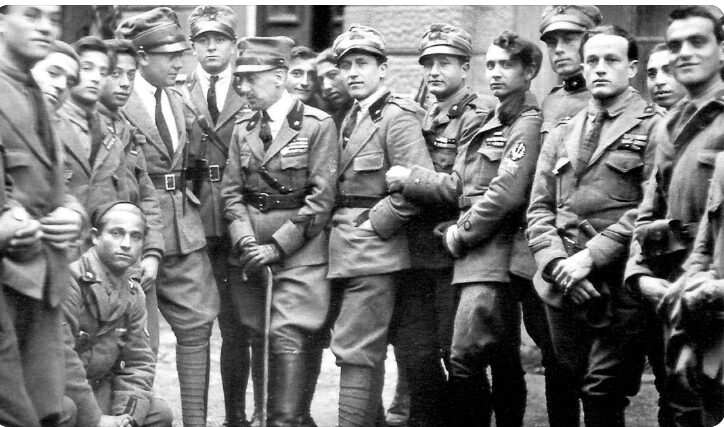
Why five brutal years of Covid haven’t dented New York’s passion for this 54th ND/NF
Five years ago at this writing (March 13), William Wolf, the 94-year-old elder statesman of the Film at Lincoln Center/Museum of Modern Art press corp, and this writer were hurried out of MoMA. We’d just finished the first of two weeks of advance screenings of the 50th ND/NF. It seems the museum was closing early on Friday because of something called Covid, which as robust, healthy seniors we weren’t fretting about. “See you on Monday,” Bill waved.
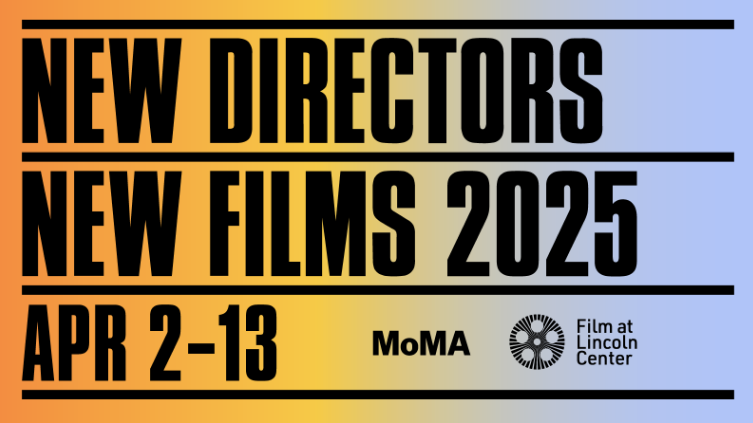
But the second week of ND/NF never happened. On March 16 New York City schools closed and on March 20 New York State closed all non-essential businesses. On March 28, Bill Wolf was among the first wave of Manhattanites to perish from this lethal, endlessly mutating disease. Hospitals overflowed and emergency tents went up in Central Park to treat the sick. Over the next five years, more than 50,000 New Yorkers died from Covid-19 and Covid-related infections. In person movies took a fast-fade to black. We began the frustrating process of streaming ND/NF debuts onto screens the size of toaster ovens. Yet somehow the daring innovations of filmmakers worldwide burned through, even on laughably small screens.
Those filmmaker imaginations are just as strong in ND/NF 2025, and their work is up on Manhattan’s most state-of-the-art big screens at MoMA and Lincoln Center. 24 features, nine shorts, nearly all North American or U.S. premieres. Tickets start at $13 for MoMA and FLC members. Programmer Dan Sullivan describes the main slate as “inevitably reflecting the uncertainties and tragedies of our global situation today, yet also evincing the sheer resilience of cinema and the continued emergence of important new talents working within it.” Dan’s right. Your critic has viewed the 21 features made available plus all the shorts, and here are the four that captured his heart:
Fiume O’Morte!: Igor Bezinovic: 2025: Croatia/Italy/Slovenia: 112 minutes

This shockingly of-the-moment hybrid doc earns its place among the most timely films debuting over five decades of ND/NF. It shows how an obscure footnote to world history can grow into a festering footprint throughout the world. The footnote is the guy on the cane in the black-and-white 1919 photo above, Gabriele D’Annunzio. Start thinking of him as the first proto-fascist strongman of the 20th century.
His off-and-on mentor, Benito Mussolini, a compatriot of Adolf Hitler, described D’Annunzio as “a rotten tooth you either pull out or cover in gold.” Mussolini’s protege coveted and ruled the Hapsburg city of Fiume in Croatia, through much of 1919–20. His followers were legionnaires and grenadiers, and they planted the seeds of neo-Nazism, making D’Annunzio their Duce. Fiume is known today as Rijeka. It’s the hometown of director Igor Bezinović. The title of his third feature, a major prize winner at Rotterdam’s fest, translates to Rijeka or Death! Readers, you better believe it.
Working with editor Hrvoslava Brkušić and 10,000 archival photographs, Bezinović first mounts a rigorous and robust history of Rijeka and D’Annunzio’s conquests. At 57 the poet was also a gossip columnist, propagandist, womanizer and cocaine addict who made brown shirts the parade dress of the day, as he humbled and excised all political opponents. Some were forced to drink castor oil. The Duce was a self-described ‘divine leader’ who loved fireworks and practiced the politics of spectacle (as did his son, who became a movie director of epics like the 1921 Quo Vadis). For a while, Bezinović’s doc rattles off history not unlike Steve McQueen’s Occupied City, a dead-serious four hour documentary of how block after block of Amsterdam housing and buildings once came under the banner of Nazi Germany.

But Bezinović is not just a documentarian, he’s a satirist, and Fiume O’ Morte! becomes the most edgy and uncomfortable screen satire since Mel Brooks’ 1968The Producers with its centerpiece show-stopper, “Springtime for Hitler.” (“Don’t be stupid, Be a smarty, Come and join the Nazi Party!” and “We’re marching to a faster pace, look out here comes the master race!” were among Mel’s lyrics.) What we see here are stills from specific Rijeka sites in 1919, then match cuts to what’s going on in front of the same landmarks in 2024. The similarities are terrifying, and they’re in blazing color. They’re acted (or reenacted) by groups of Rijeka youth and young adults playing (or being) a variety of skinheads, brown shirts, misogynists, virulent nationalists and other denizens of the hard right. Bezinović even casts and costumes multiple locals in playing elderly versions of D’Annunzio, plying his dictatorship. Screen’s movie critic Wendy Ide calls all this “a gloriously punk spin on the historical documentary genre,” and while it’s that, it’s also something much deeper and darker.
Bezinović has been open and candid about his intent. He told Hollywood Reporter’s Georg Szalai (2/1/25) that his subject “is a dictator, but you realize he’s a weird dictator. He’s like Joker from Batman–super intelligent and super funny, but at the same time you’re really afraid of him.” Uh, huh. Most Rijeka natives under 30 tell Bezinović in interviews they haven’t a clue who D’Annunzio was, while nearly all older residents remember him the same way Romanian elders recall Nicolae Ceauşescu as well as that country’s 16th century Vlad the Impaler, as cruel and relentless dictators. There’s a generation gap in Rijeka wide enough to drive a Mack truck through.
George S. Kaufman famously observed that “satire is what closes on Saturday night,” But Brooks’s 1968 movie, complete with its “Springtime for Hitler” tune that The Jewish Forward called “the best worst song ever written,” is still a popular revival, and Its 2001 Broadway production won 12 Tony awards and ran six years. A hot button for conversations this week at Lincoln Center may be whether Bezinović’s latest work will make the cut in DC at The Kennedy Center, now under new management.
Timestamp: Kateryna Gornostai: 2025: Ukraine/Luxembourg/Netherlands/France: 125 minutes
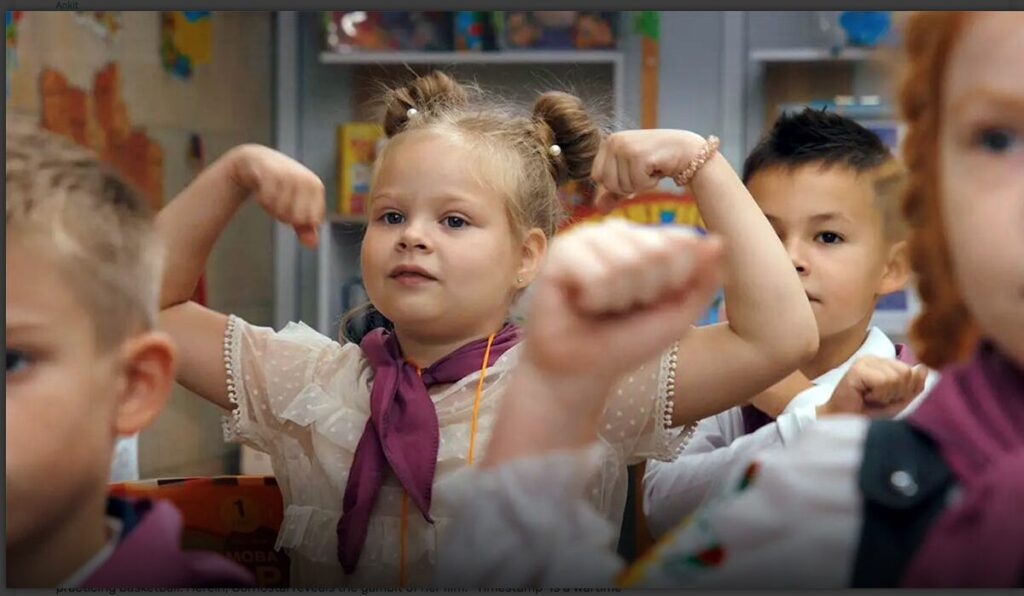
There is hope. Listen to the voice of another country’s current leader: “Hello to my darling friends. I, Volodymyr Zelenskyy, will lend my voice to the wonderful, charismatic, friendly bear, Paddington. You can go to see Paddington with your whole family…you know you will definitely walk out of the film in a fantastic mood.”
The enthused quote above is from a promotion video used to introduce Ukrainian viewers to the first Paddington in 2014 and its 2017 sequel. It’s not included in Katheryna Gornostai’s heartwarming and at times enthralling documentary of Ukraine’s school children and their teachers. Maybe it should be. Any parent or young adult of voting age who sees Timestamp can’t help but sense the Ukraine president’s unseen and unheard presence throughout Timestamp’s two hours. The country’s education system is holding together—sometimes with scotch tape, paper clips and air raid sirens—in part because the girls, boys, teachers and administrators of Ukraine’s bombed and battered schools show immense national character, pride and trust in their leader. Paddington, as any moviegoer knows, would never lie to anyone.
Timestamp takes its cameras into a long, long series of Ukraine’s elementary, middle school and high school classrooms, from March ‘23 through June ‘24. Each is identified by its village or town name, as well as its distance in kilometers from an active combat zone. The closer to an actual theater of war, the more damage to bricks-and-mortar science labs and libraries. Teachers are shown to be unfailingly gentle and kind in wiping away the tears of first and second graders who’ve lost their classrooms, and in one instance, a child’s soldier dad. Backpacks contain timestamped hospital supplies and ointments for sudden wounds. History and math lessons are taught in cramped underground shelters. Though anti-war sentiments ring out loud and clear in songs, teen girls and boys resolutely learn to handle and fire handguns at practice ranges. There’s a funeral for a school principal who died in a shelling. The dead are mourned even as graduation day approaches.
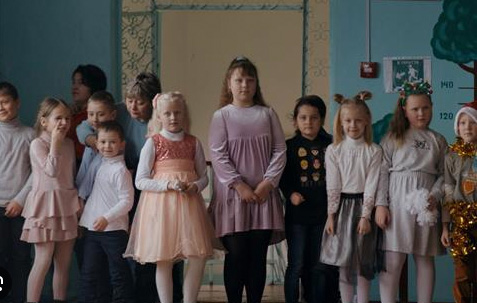
Gornostai and her editor Nikon Romanshenko adroitly weave a narrative in which the loving interdependence between tireless and responsible adults and trusting children is paramount. Though Timestamp is a documentary, it shares pride-of-place with memorable wartime dramas of past and present–from William Wyler’s Mrs. Miniver and Alberto Cavalcanti’s Went the Day Well? through John Boorman’s Hope and Glory and Steve McQueen’s Blitz. Their common theme today is summarized in the universal souvenir shop sign, Keep calm and carry on, but its cinematic roots are these dramas and now Gornostai’s documentary.
Leave it to an actor to get the last word in this review. “Until today I had no idea who provided the voice of Paddington bear in Ukraine,” declared Hugh Bonneville, who starred in both Paddington and Paddington 2. Bonneville concludes: “Speaking for myself, thank you, President Zelensky!y”
Familiar Touch: Sarah Friedland: 2024: United States: 91 minutes
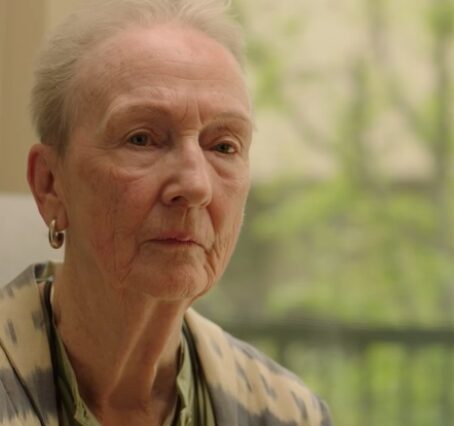
Devoted moviegoers over 80 naturally pay close attention to Alzheimer’s dramas. One reason is because there are so few that deal with progressive and incurable dementia. Since 2008, the gold standard in Alzheimer’s stories up on the big screen has been Sarah Polley’s Away From Her, a courageous and illuminating filming of Alice Munro’s slim novellaThe Bear Came Over the Mountain. (Polley has said Munro’s words “entered me like a bullet,” leading her to believe that “the things you remember, not in words but in the very molecules that make up your being, can be more painful than the things that are forgotten.”)
Away From Her starred Julie Christie, a versatile and chameleon-like British actress who always looked like 50 million bucks and could play anything. Christie was better than Judi Dench in Richard Eyre’s Iris, Gena Rowlands in Nick Cassavetes’s The Notebook, and Anthony Hopkins in Florien Zeller’s The Father—no small achievements. In Familiar Touch, Kathleen Chalfant, a multi-award winning giant of the American stage (Angels in America, Wit) as well as a major screen and television actress, is better than all of them. Familiar Touch, Sarah Friedland’s debut feature, couldn’t be a wiser choice for ND/NF’s Opening Night, for if Oscar’s aging voting membership remembers Chalfant’s peerless performance through this coming fall, she just might collect a Best Actress nomination.
Chalfant plays Ruth Goldman, an original Brooklyn girl (Flatbush Avenue) and retired cook who’s now living alone (at 87, seven years older than Chalfant) in a beautifully furnished California home of taste and substance. She’s well-off and still radiates her New York upbringing, class and independence. Director Sarah Friedland, a documentarian and choreographic movement specialist, spent a decade writing and paring down her minimal screenplay for this remarkable debut feature.
The first five minutes play wordlessly, as we watch Ruth making her way easily through sunny, comfy rooms, into the kitchen she’s cooked in for decades. It’s a jolt when her architect son, Steve (H. Jon Benjamin, dutifully attentive) arrives for the salmon sandwiches Ruth is building as she leaves the toast in the dish drain. Steve announces he’s driving his mother to the assisted living facility (called ‘Bella Vista’ but actually Villa Gardens in Pasadena) she’s previously agreed to move into. And so Ruth, docile but remembering little of this, exits her home for the last time. She touches Steve’s hand lightly In his car, the first of many visual signals Friedland and Chalant send to the viewer that Ruth’s touch is now processing what her mind can’t. The title Familiar Touch will become the viewer’s narrative cue.
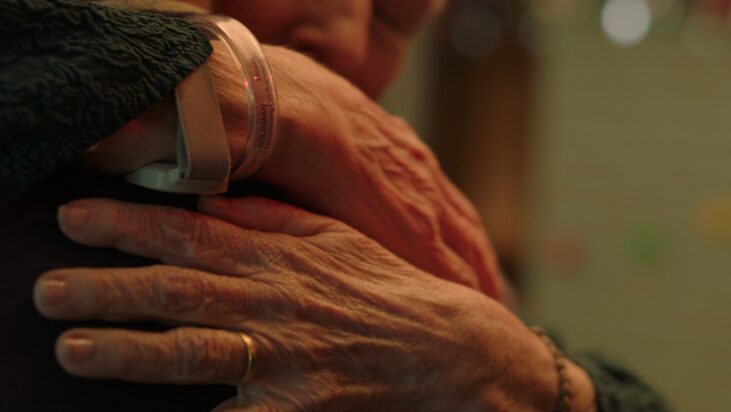
Thus begins a series of dramatized demonstrations by a movie director and a movie actress. They’re shooting in a real-life dementia facility filled with non-professionals, itself a daring aesthetic decision. The real-life setting reinforces how Ruth’s acute senses of sight, sound, smell and particularly touch continue working when brain functions are shutting down. Some of the unforgettable scenes include Ruth floating silently in Villa Garden’s luxurious outdoor pool… Ruth taking over Villa Garden’s kitchen to dictate every precise step of a Russian cabbage borscht to its astonished chef… Ruth walking away from the facility (an error by her supervising careworker, played by an excellent Carolyn Michelle) to browse through a nearby convenience store and buy $44 worth of groceries… Ruth slow dancing with her visiting son, alongside other couples, to a soaring soul ballad by Dionne Warwick. The 91-minute movie is really a series of set pieces as Chalfant opens up and conducts a master class in what it’s like to live with incurable Alzheimer’s. It’s a sublime performance that never for a second asks for your pity—but make sure you bring along at least one handkerchief.
Crushed: Camille Vigny: 2024: Belgium: 12 minutes

Writer/director Vigny is voice-overing her memories from age 18 to 20. Neither she nor her former lover are shown. These are excerpts:
“The summer I turned 18, I met Jean, and I fell in love. He was nervous, wore an oversize white shirt, and sweated a lot.” They went to a movie, talked about it all night, “and smoked 600 cigarettes. He kissed me without warning, and we became one in an instant. I began to appreciate all the once insignificant curves of my body.” The couple go on holiday together. “Alcohol transformed him. One night, after a few drinks, a monster appeared before my eyes. Jean was tormented, lonely and sad.” She becomes confused, depressed, fearful. “He was always the one who needed saving, not me.”
“The summer I turned 19, Jean hurt me for the first time, with his fists. He was drinking gin from a small glass bottle. He sat on my stomach, raised his arms, and kept pounding me in the head.” She breaks away and flees from him. But then she returns. “Jean and I acted as if nothing had happened.” She imagines people “shuddering at my smile” as they observe her bruises.
“The summer I turned 20, I ran away.” She’d found Jean with a knife, scraping off slices of a watermelon. “If I hadn’t let myself try running away, I believe Jean would have killed me.”

What we’re watching during this dire narration is the beginning and progression of what Vigny calls stock car racing, but is more commonly known in rustic rural circles as a Demolition Derby. This is where young adults race and wreck cars (some with rollover bars and protective cages) for fun and prizes. Vigny’s triumph as a memoirist and filmmaker is not just her brilliant concept, but its artful execution—matching the shots of escalating, skidding, colliding and overturning vehicles weighing tons, to her skidding, colliding, nearly overturned and potentially fatal romance with a crazy drunk. Could you conceive a more powerful cinematic metaphor on abuse?
Crushed compares favorably with Elisabeth Subrin’s devastating short Maria Schneider ‘83, shown at the New York Film Festival three years ago. Maria was the late, Ill-fated young actress hired to submit to Marlon Brando in a simulated anal sex scene (known forever in cinema history as “the butter scene”) in the 1972 Last Tango in Paris. Here in a French television interview for 8 minutes, Maria describes her betrayal and humiliation by a director she trusted, Bernardo Bertolucci. Then a French Lebanese actress comes on and does an identical, word-for-word 8 minute monologue. Then a French-Senegalese actress does a third 8 minute identical, word-for-word monologue. Director Subrin makes the indelible point that countless actresses have been scarred for life by male directors they trusted. It’s one of the most crushing concepts on abuse you’ll ever see on screen. Camille Vigny’s Crushed is in that rare league, and ought to have an encore showing at this September’s New York Film Festival.
This concludes Critic’s Choices. Watch for Brokaw’s picks in the 24th annual ‘Open Roads’ Italian film festival, May 29-June 5.
Regions: New York City
